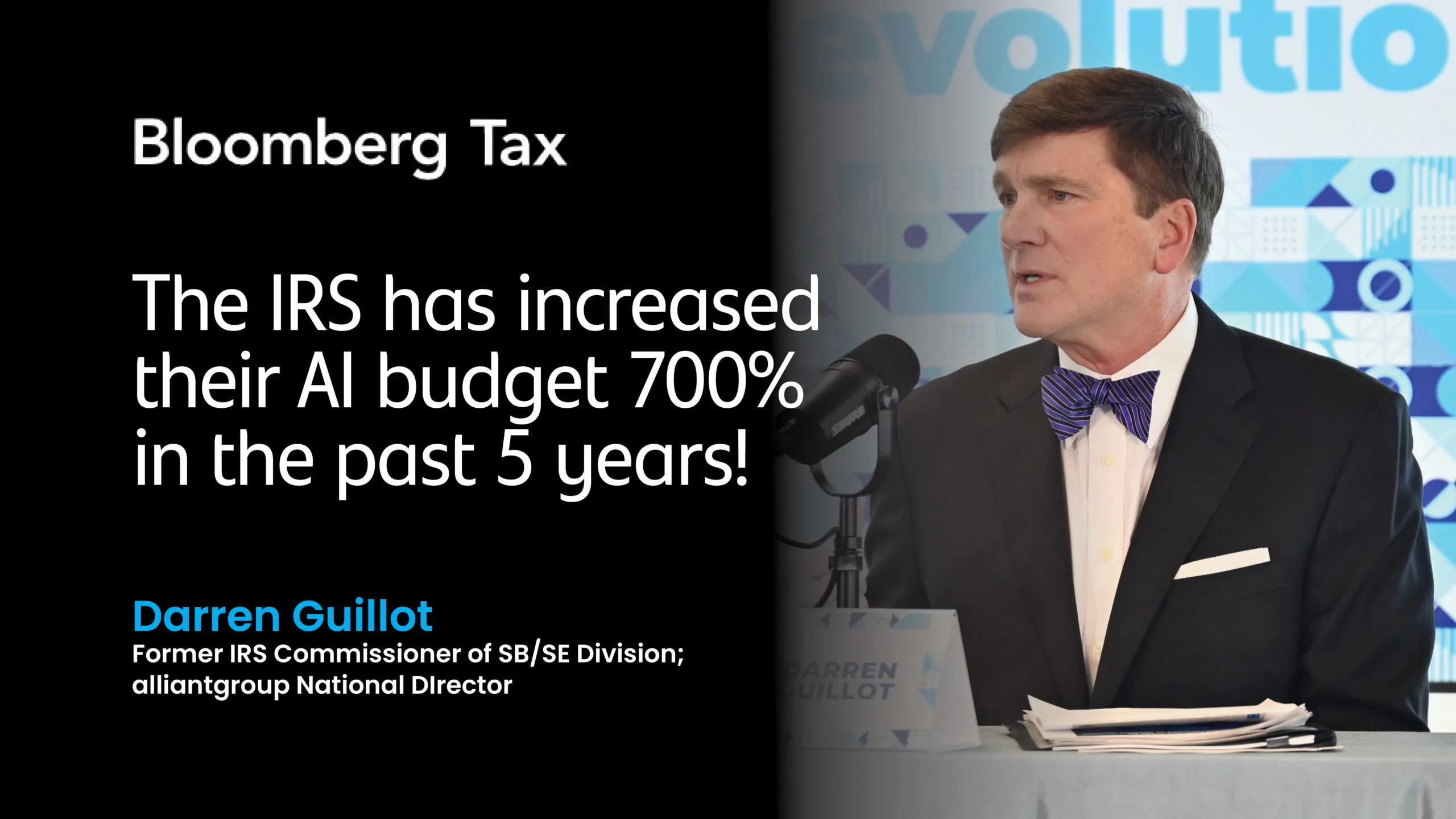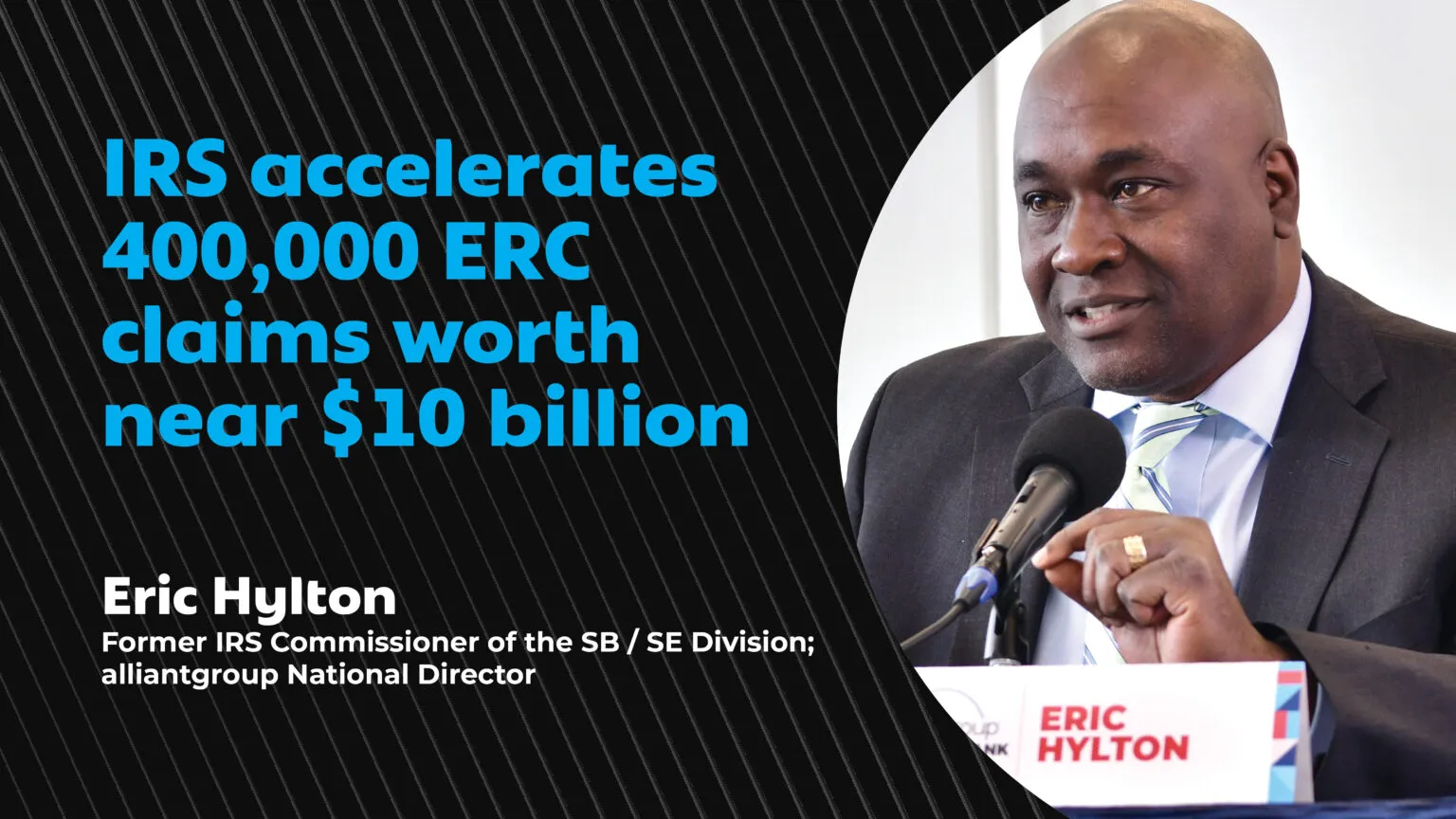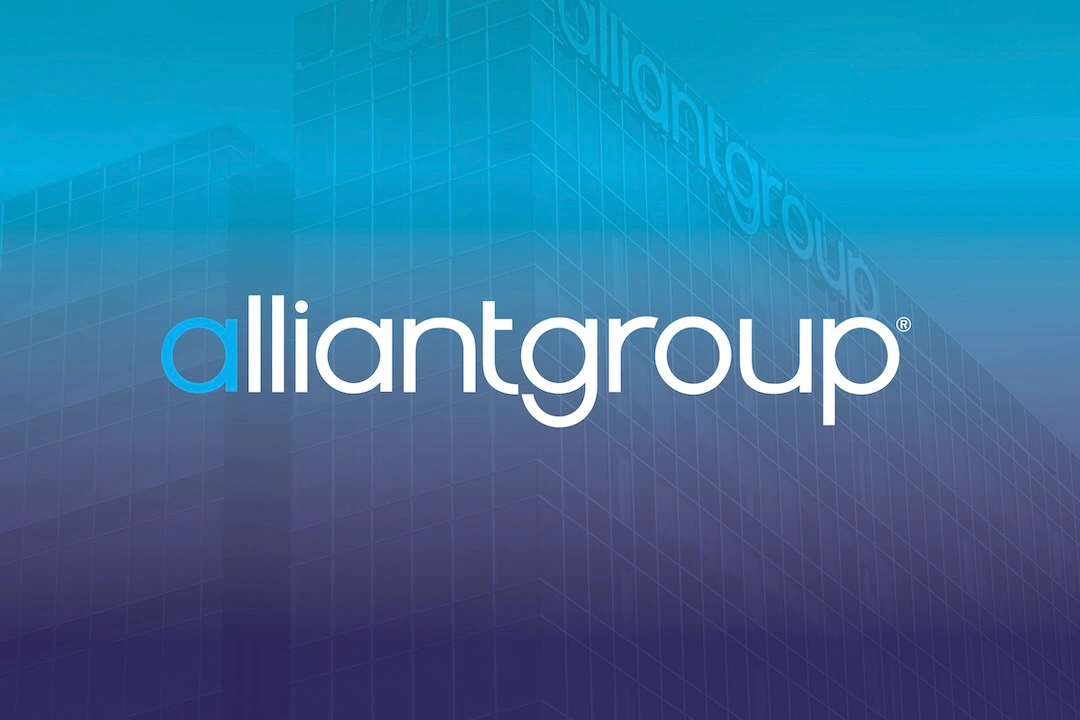September 29 | published in Reuters Journal of Taxation
by Dean Zerbe, Former Senior Counsel to the U.S. Senate Finance Committee; alliantgroup National Managing Director
If you have any questions about this article, please send us a message.
Unfortunately, the actual number of SMBs and charities taking advantage fell far below that due to misinformed business owners lacking a full understanding of the credit and its qualifications.
Washington, D.C. took swift action in responding to the Covid-19 pandemic – and the economic impact that followed – by taking somewhat of a “kitchen sink” approach in providing support and relief to small and medium business (SMB) owners, and charities. From this approach, Congress brought forward arguably the most effective pandemic-era tax relief: the Employee Retention Credit (ERC).
The ERC provides SMB owners and charities who were impacted by Covid-19 with a $7,000 tax credit per employee, per quarter within the first three quarters of 2021 (and a somewhat less generous credit for 2020). For example, a 100-employee business that qualifies for the ERC could potentially receive $700,000 for just one quarter. For heavily compromised businesses, this amount of capital would be the difference between staying afloat or closing its doors for good.
While this significant credit ended with the signing of the Infrastructure Investment and Jobs Act last September, the good news lies with the active push in Congress to reinstate the ERC for the fourth quarter of 2021 and perhaps restore it for 2022.
Three Ways to Qualify For ERC
The eligibility for ERC is far broader than is generally understood, and an SMB or charity can qualify, if they’ve experienced at least one of the three impacts: (1) A 20% YoY reduction in revenues (2) More than nominal operational impacts due to a Covid-related federal, state, or local government regulatory order (space/distancing requirements; cleaning requirements, etc.) (3) Supply chain disruptions and disturbance in manufacturing schedule and costs. The key is to understand the “more than nominal impact” test. Parsing out the non-nominal impacts is where the bulk of SMBs will qualify – for instance, if an SMB or charity has been subjected to one of the 10,000 federal/state/local or regulatory government orders related to Covid-19, they would pass this test. With the number of Covid-related orders that are out there impacting business – many business owners may possibly have a claim for this credit.
It’s important to note that the “more than nominal impact” test also encompasses businesses that have not seen a downturn in revenue. There are thousands of businesses who qualify for the ERC and were subjected to a government Covid-19 order all the while still hiring and expanding. After all, the intention behind Congress enacting the ERC was to encourage employers to retain employees and hire new ones.
The IRS recognized that Congress meant for the ERC to assist a vast number of businesses and charities, so the agency put forward taxpayer-friendly guidance for businesses to claim it. With the broad qualifications and filing guidance, the IRS expected roughly 70-80% of SMBs to qualify and claim the ERC. Unfortunately, the actual number of SMBs and charities taking advantage fell far below that due to misinformed business owners lacking a full understanding of the credit and its qualifications.
Mistakes and Misunderstandings Business Owners and Charities Make
The top mistake SMBs and charities make regarding the ERC include much of what has been discussed above. However, other key mistakes and misunderstandings include:
(1) Businesses who partook in the Paycheck Protection Program (PPP) or had a PPP loan forgiven cannot claim the ERC.
- False. Congress changed the law and removed this specific limitation.
(2) A business must have been shut down to qualify for the credit.
- False. As discussed above, even a partial suspension order (or operational disruption that was more than nominal), makes you a good candidate for the ERC.
- Businesses must ask themselves: due to a government order, were we unable to continue activities in a comparable manner and did that result in a more than nominal impact on our business.
(3) Businesses deemed “essential” cannot qualify.
- False. Even essential businesses that experienced a disruption may still qualify for the ERC, due to partial shutdowns or other orders impacting varying aspects of business operations.
(4) A business that is in losses or doesn’t have a tax liability is ineligible.
- False. This is a refundable credit.
(5) ERC recipients are made public.
- False. Unlike the PPP, ERC recipients are not publicly disclosed.
- Tax provisions are confidential (just like WOTC, R&D and a host of others)
(6) A company with over 500 employees cannot qualify.
- False. The employee count is based on full FTE, but the ERC is based on all employees partial and full.
- Some companies with over 500 employees have an FTE calculation which puts them below 500.
- Also, if a company paid any employees to not work, or to work less than the hours for which they were paid, then the employee count restriction would not apply for those employees.
(7) The ERC is not applicable to charities.
- False. Charities are excellent candidates for the ERC, especially if they couldn’t hold services or fundraisers and faced disrupted operations.
Good Candidates For ERC
There are thousands of SMBs and charities across the country spanning dozens of industries, all of which are good candidates for the ERC. Particularly strong candidates include those within the food industry, manufacturing, construction, and healthcare, and others working with their hands (dental, massage, therapy, etc.).
Just as SMBs, businesses with more than 500 employees strong should still take a hard look at whether they can qualify based on FTE headcount and other factors, very small businesses should also look closely at the value of the ERC for them. Companies with as small as 5 to 10 employees have claimed the credit, which is still a huge lift when imagining that 10 employees would be a $70,000 credit for one quarter alone. With these (extra) small businesses in particular, the ERC has proven a godsend.
ERC real-use cases, for one quarter include:
- A dental lab with 17 employees received a credit for $60,000
- A construction business with 425 employees received a credit of $1.61 million
- An agriculture feed company with 33 employees received a $123,000 credit
- For charities, a museum with 19 employees received a credit of $60,000
Needless to say, the funds received have made all the difference to these SMBs and charities – helping keep doors open and bring in new hires.
Congress and the ERC – Reinstatement?
Congress had put in place the ERC for the entire year of 2021 and unfortunately, as part of the Infrastructure Bill, the U.S. Senate ended the relief credit a quarter early to help offset costs. There is now a strong push in some quarters of Congress to not only revisit that ill-advised decision and reinstate the fourth quarter of 2021 but to also to extend the ERC for 2022.
Senator Ben Cardin (D-MD) has been the leader on a new Covid-19-relief bill and has promisingly expressed an open mind to adding ERC. In the house side, a bipartisan group of members led by Congresswomen Stephanie Murphy (D-FL) and Carol Miller (R-WV) as well as Congressmen Kevin Hern (R-OK) and Terri Sewell (D-AL) have introduced legislation that would reinstate the fourth quarter of ERC. In the Senate, Senators Maggie Hassan (D-NH) and Tim Scott (R-SC) have put forward similar legislation. Bringing back the fourth quarter is especially important given the basic fairness to SMBs and charities that depended on and made decisions based on the ERC being in place for the full year.
The efforts to reinstate the ERC have been bolstered by a collation of over 70 associations and organizations representing SMBs and charities that has stated its support for the ERC. Elected officials getting an earful from their local SMBs and charities about the importance of the ERC, is also pushing them in the right direction. SMBs and charities are still struggling to find their footing and retain employees in a post-Covid world.
The ERC has proven to be an extremely useful tool for SMBs and charities, helping them offset the costs and burdens they’ve faced having to adopt to the bells and whistles of addressing Covid in the workplace. The ERC has been particularly useful in that it recognizes a wide host of affected SMBs and charities across the country whether urban, suburban or rural. While Congress should take a hard look at bringing ERC back, it’s just as important that SMB owners and charities take an even harder look as to whether they qualify for this tremendous tax benefit.False
About the Author

Dean Zerbe is alliantgroup’s National Managing Director based in the firm’s Washington D.C. office. Prior to joining alliantgroup, Mr. Zerbe was Senior Counsel and Tax Counsel to the U.S. Senate Committee on Finance. He worked closely with then-Chairman and current Ranking Member of the Finance Committee, Senator Charles Grassley (R-IA), on tax legislation. During his tenure on the Finance Committee, Mr. Zerbe was intimately involved with nearly every major piece of tax legislation that was signed into law – including the 2001 and 2003 tax reconciliation bills, the JOBS bill in 2004 (corporate tax reform), and the Pension Protection Act. Mr. Zerbe is a frequent speaker and author on the outlook for short-term and long-term changes in tax policy, as well as ways accounting firms can help their clients lower their tax bill. He holds an LL.M. in Taxation from NYU and a J.D. from George Mason University.


